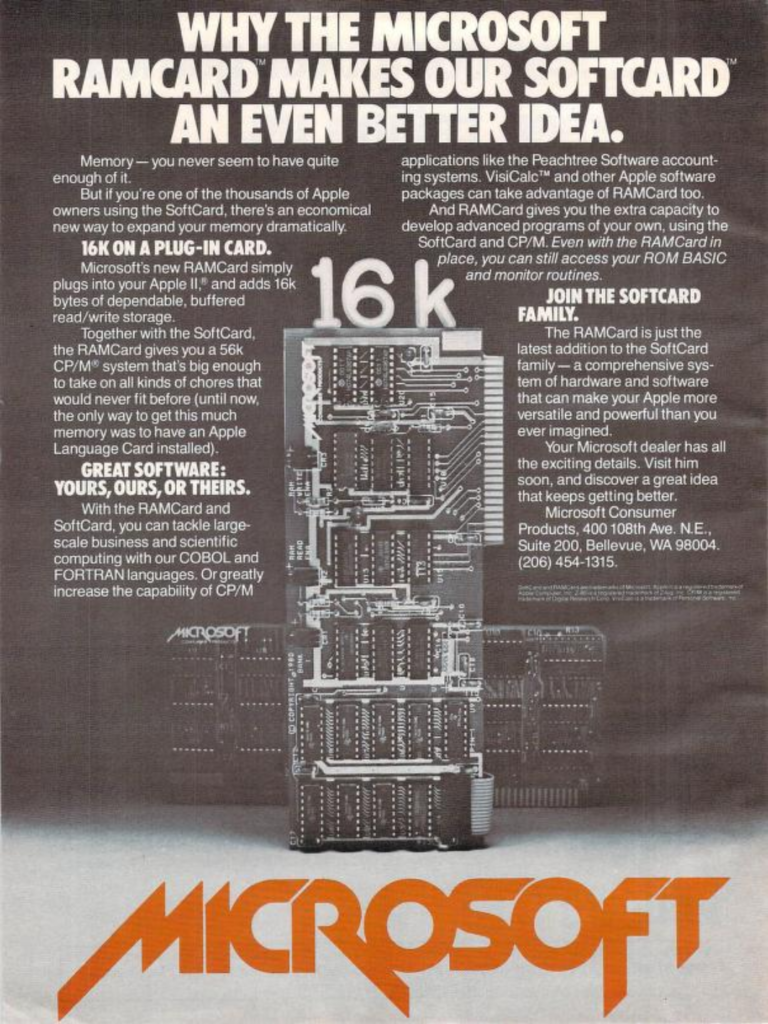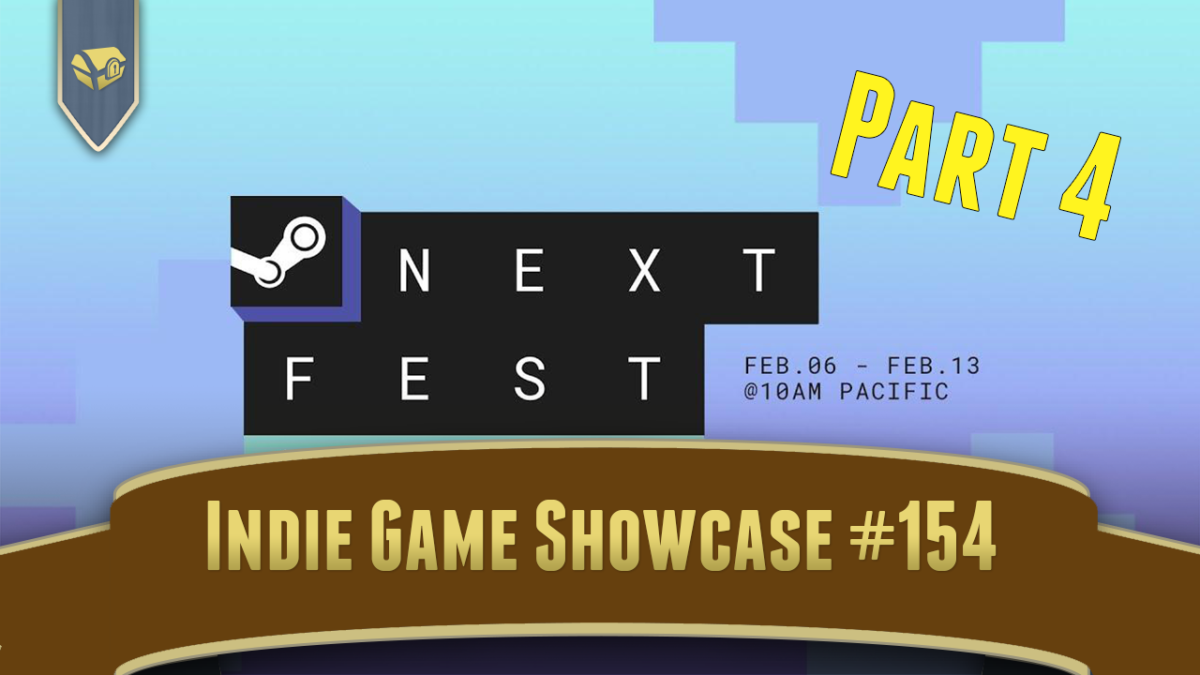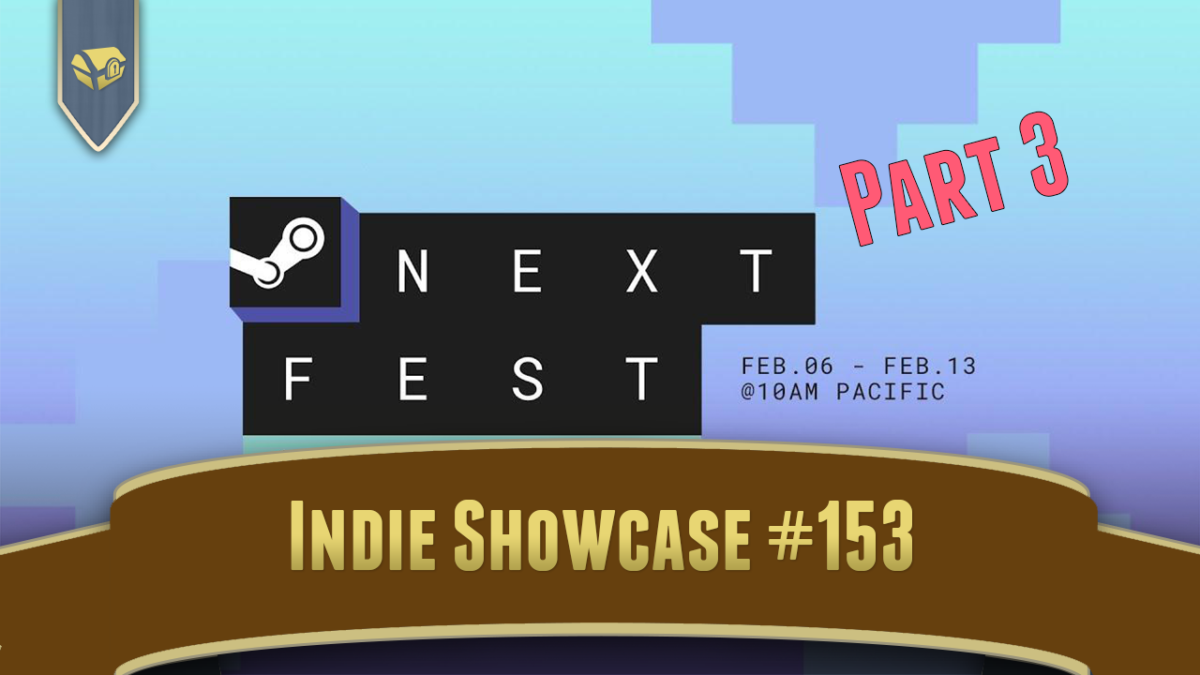Louie Zong makes a bunch of fun song videos! Once in a while they’re game related. This one’s a short album made with Warioware D.I.Y’s composition feature. Even though it’s only about 12 minutes long, there’s ten songs squeezed in there, and each come and gone so soon that none have the opportunity to bore your brain.
Year: 2023
The Nintendo Font
Youtuber T2norway educates us on a very commonly used font for Nintendo products from around the Gamecube era onward, especially remembered for its use in Wii Sports and other Wii software:
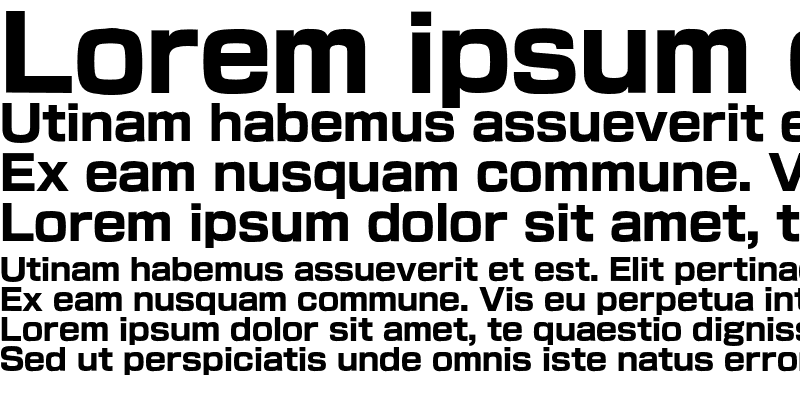
The video’s only four minutes long but the basic gist is that it’s actually two closely-related fonts, New Rodin and Shin Go, both based on a typeface created in 1975 called Gona. They have been called the Japanese version of Helvetica. They see frequent use in Japan in media, on signage, and of course in games too!
What’s the deal with this font? (Youtube, T2norway, 4 minutes)
Best of Next Fest 2023 Part 4
Part 4 of my favorite games of Next Fest 2023 showcase.
0:00 Intro
00:18 Monster Crawl
1:42 Cavern of Dreams
3:32 Witch Guild Survivor
4:37 Extreme Evolution Drive to Divinity
6:52 MistRogue
8:08 Shattered Heaven
9:54 Baldy Bounce
12:07 Horde Hunters
13:45 A Sister’s Journey
15:37 Roots of Yggdrasil
18:34 Gods of Defense
19:40 Trinity Fusion
21:33 Wall World

Owner of Game Wisdom with more than a decade of experience writing and talking about game design and the industry. I’m also the author of the “Game Design Deep Dive” series and “20 Essential Games to Study”
Lowlights of the Game Awards
One of a number of great gaming blogs you should be reading is A Secret Area, which has been around for awhile now. Back in December they did a piece covering the worst off all of the instances of The Game Awards, an institution so prestigious that this may be the first time I’ve even heard of it.
The most fun of the Oscars and other award shows is mocking the whole awful affair, and the Game Awards are no different. Please, have a look and enjoy!
Lowlights of the Game Awards (A Secret Area)
Metroid Planets
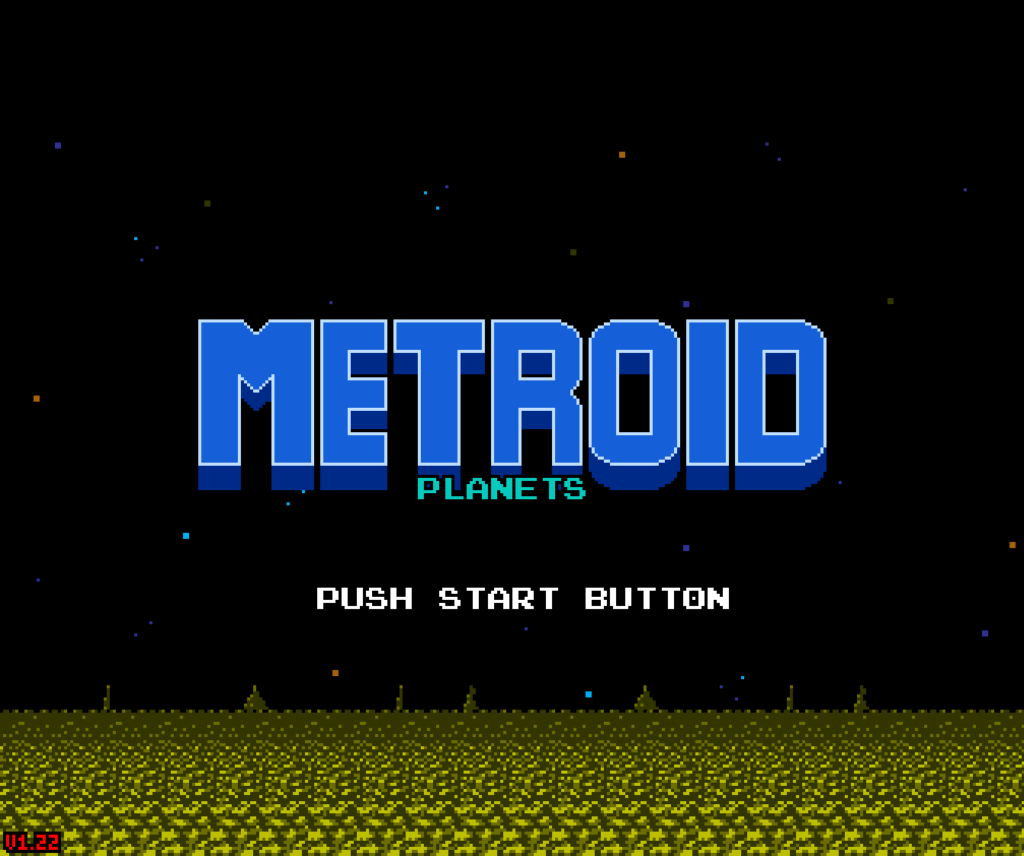
Edit the Frog is still taking a break from covering romhacks, there’s thousands to sift through on romhacking.net, but in the meantime, here’s a fan-made, browser-playable version of Metroid! Although it looks a lot like the NES game, it’s no hack, but a from-the-ground-up reimplementation.
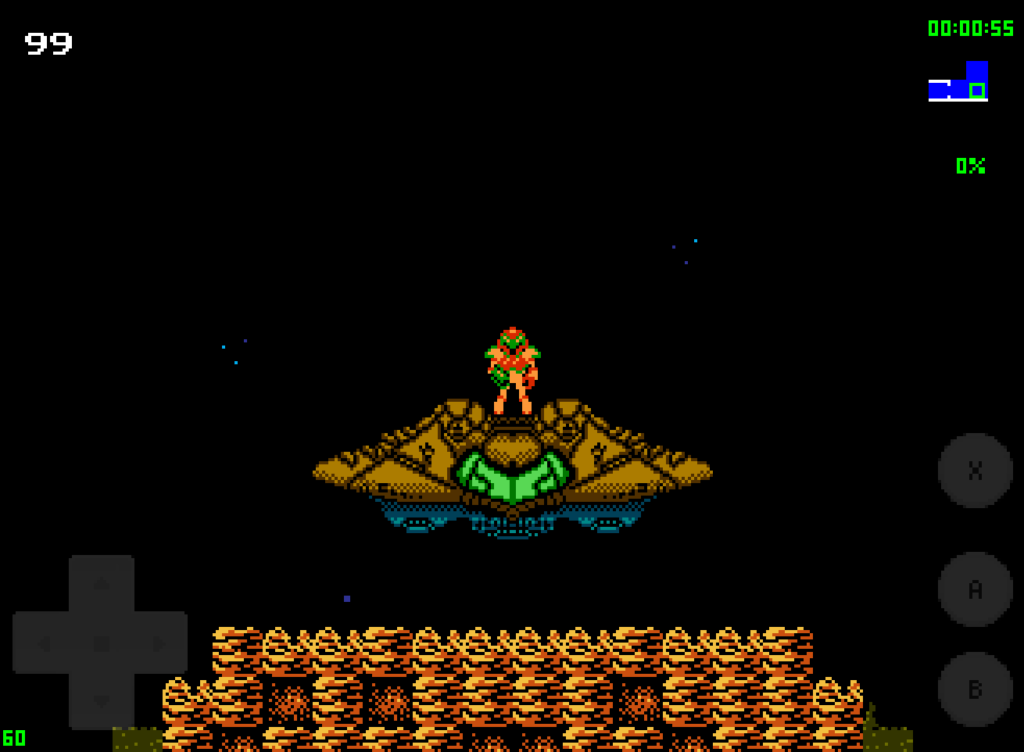
It was made specifically to help overcome the limitations of the NES platform, so Samus animates much more smoothly, there’s particle effects, multi-directional scrolling areas, built-in mapping, and the music uses later, more orchestral versions of the original’s music, although with an option to switch to the 8-bit originals. (I find that the music is a bit reluctant to play in the current version, though.) There’s other interesting features new features to find as well.
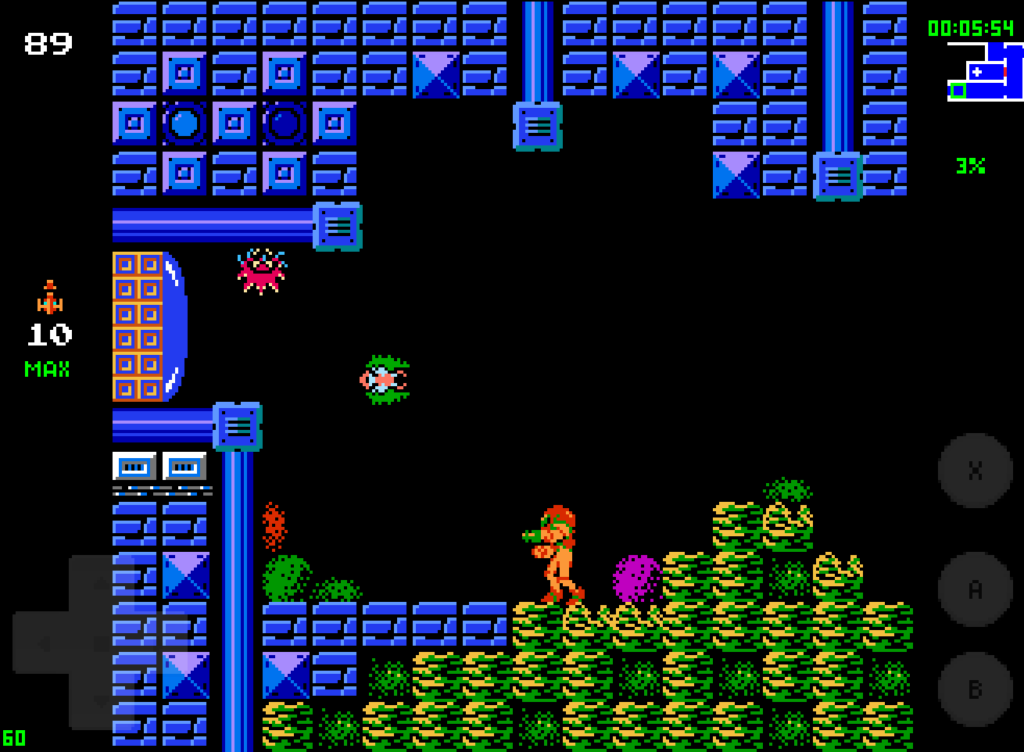
Most interesting is a built-in randomizer mode, and a second, alternate planet to explore! It’s designed along the lines of the original Zebes (here called “Zebeth,” a nod to the on-screen Romanization of Zebes in the NES game), but has some new elements, including areas that scroll in all directions, and new bosses!
Metroid is approaching 37 years old, and it was looking a bit long in the tooth three decades ago. Yet it’s still remarkably atmospheric for its age, and I find there’s something evocative about how the game’s world doesn’t feel designed like a challenging obstacle course for the player, like it just exists on its own and doesn’t particularly show any care for the player. There are some item gates, but like the original NES Legend of Zelda, many fewer than you’d expect, especially compared to their SNES sequels.
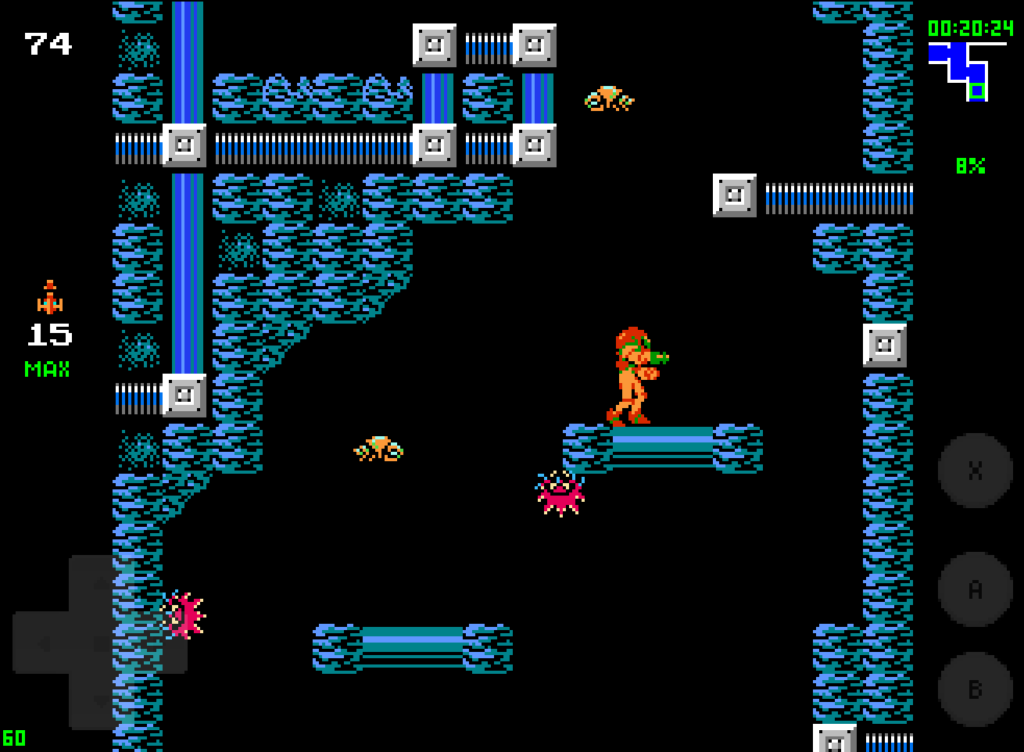
Screed time! Will Metroid still be played 20 years from now? I think so, although I find that most of the internet energy around these classic NES games now is focused on speedrunning, randomization and romhacks, and two of these three things Nintendo is actively fighting against. It’s a good example of how copyright law and corporate control has the potential to hold back both fan interest and property longevity. The rights to these games should be released to the public, while there is still a public that cares about them. Nintendo would probably get more money out of it, in the long run, from making sequels anyway.
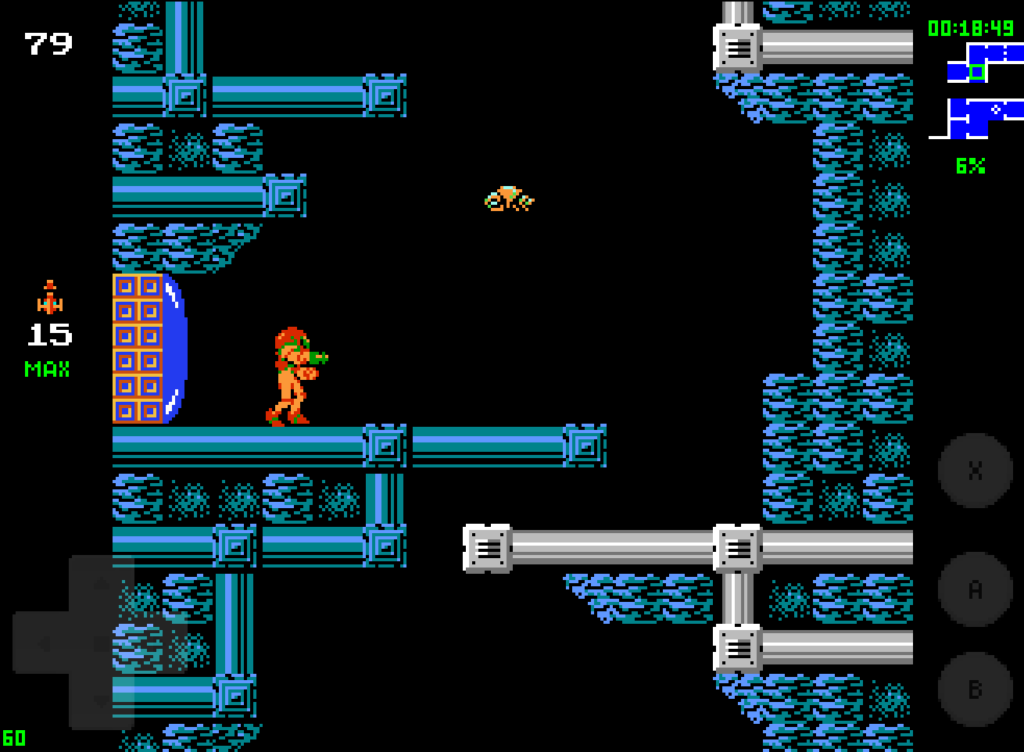
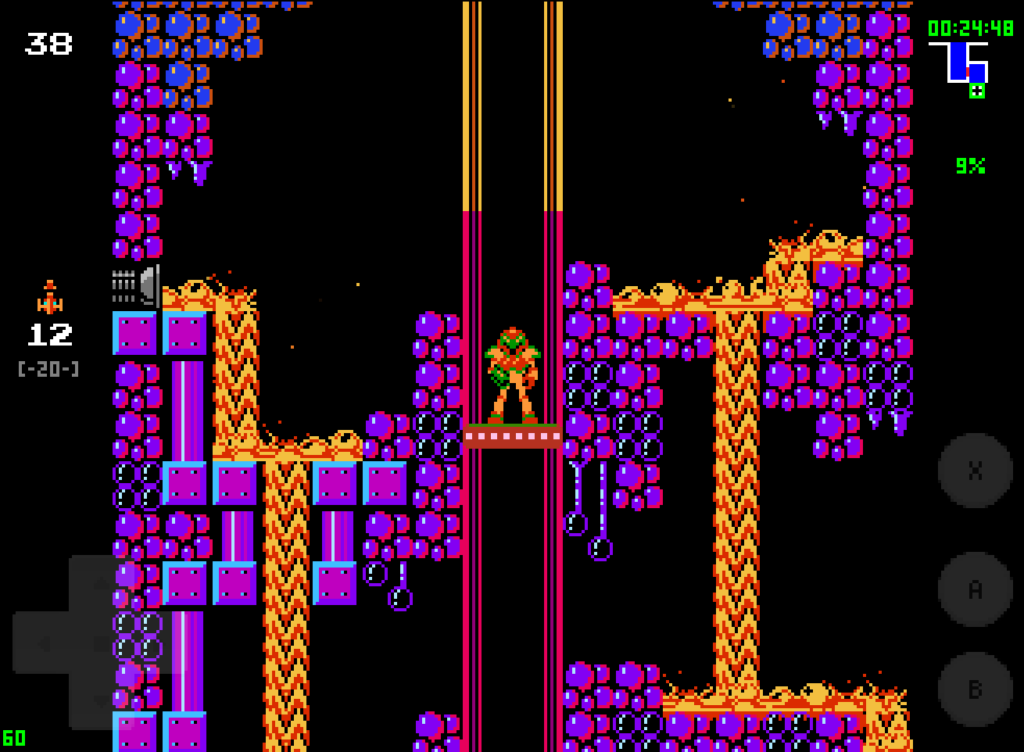
Wolfenstein 3D Ported to the 8088 and CGA
The era of the 3D shooter was inaugurated in 1992 by the shareware release of Wolfenstein 3D by id Software, for 80286-based DOS computers. It wasn’t until this year though that the game was backported to the 8088, the chip the original release of the IBM PC used, and CGA cards. The port was made by James Howard, who showed it off in a Twitter thread. Rees at RetroRGB wrote an article on this “updated” version.
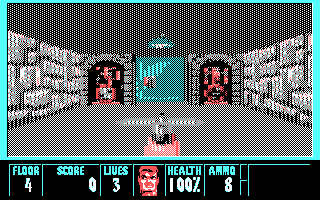
While the monitor colors for CGA are pretty harsh on the eyes, the code also has support for CGA’s little-known 16-color composite output, as well as Tandy graphics and monochrome.
Wolfenstein 3D Comes To Even Older PCs With New 8088 / CGA Port (RetroRGB)
WolfensteinCGA source code repository (GitHub, requires shareware or commercial Wolf3D data files)
Nicole Express: Vintage Pachinko
The always excellent Nicole Express has a great post on the Japanese gambling game Pachinko, especially the imported machines that made it to the U.S. when for a brief time we liked it too. It contains the fact that we probably got video pachinko before Japan did, through the Odyssey2 game Pachinko! (The exclamation point there is part of the game’s title, as it is with all Magnavox-produced Odyssey2 games. While I enjoy that bit of trivia, I am not actually hugely excited about it.)

Physical slot machines were, and maybe still are, illegal in Japan, so all the ridiculous graphic and sound flourishes those demonic entities bear in North America are instead put in the service of the Tiny Silver Balls. I’ve always shied away from these forms of gaming for the same reason I never got into Magic: The Gathering: by tying profitability to gameplay, they feel to me like they’re more business model than game, really. I might not be able to earn my quarter back at Pac-Man, but at least there isn’t someone figuring out how to work those odds against me.
Nicole Express: Vintage Pachinko: Going Back And Forth Across The Pacific
Best Games of Next Fest 2023 Part 3
This is part 3 of my favorite games of next fest February 2023 showcase.
0:00 Intro
00:18 Bleak Sword DS
1:27 Yog-Sothoth’s Yard
3:38 Full Void
5:30 Striving for Light Survival
7:04 Teslagrad 2
8:38 Desynced
10:48 Afterimage
12:41 Mika and the Witch’s Mountain
14:30 Gamma 19
15:46 Shumi Come Home
17:24 Dragon Bell Xi
18:53 Death or Treat
20:23 Darkest Dungeon 2
22:38 Highwater

Owner of Game Wisdom with more than a decade of experience writing and talking about game design and the industry. I’m also the author of the “Game Design Deep Dive” series and “20 Essential Games to Study”
A 1982 Issue of Compute Introduces the Commodore 64
Overseeing the early days of computing was Compute! Magazine, properly stylized with an exclamation point. They got their start as The PET Gazette, changing over to Compute as their focus spread into more types of home microcomputers. Compute stuck around as a multi-platform for some time, but ultimately spun off a couple of manufacturer-dedicated magazines. One of these was Compute’s Gazette, whose name harkened back to those PET-exclusive days. It focused on Commodore machines, and would then outlive Compute itself by some years.
The early years of Compute magazine are joyous. They’re filled with esoteric data, geeking out over low-level coding matters, and lots and lots of type-in programs. But it is depressing to me, reading over the early issues, knowing how numbered are its days. This whole genre of computer magazine, that encouraged users to type in programs, that offered coding tips, sometimes even offered add-on disks of software, is now only a memory. We are all poorer for it.
The writing on the wall for this style of magazine could perhaps be seen as early as September 1982, when Compute published an article about a great new upcoming product from Commodore, the Commodore 64. Not because of the style of the article or anything specific about the computer. Just that, by being so greatly popular, the C64 greatly expanded the magazine’s audience, which would inevitably steer it towards becoming more “mainstream,” which ultimately would be the death knell for a publication like this.
Still, it’s fun to look back on. Here is that article in image form, or you could find it on the Internet Archive, where the archives of Compute live on, for a time.
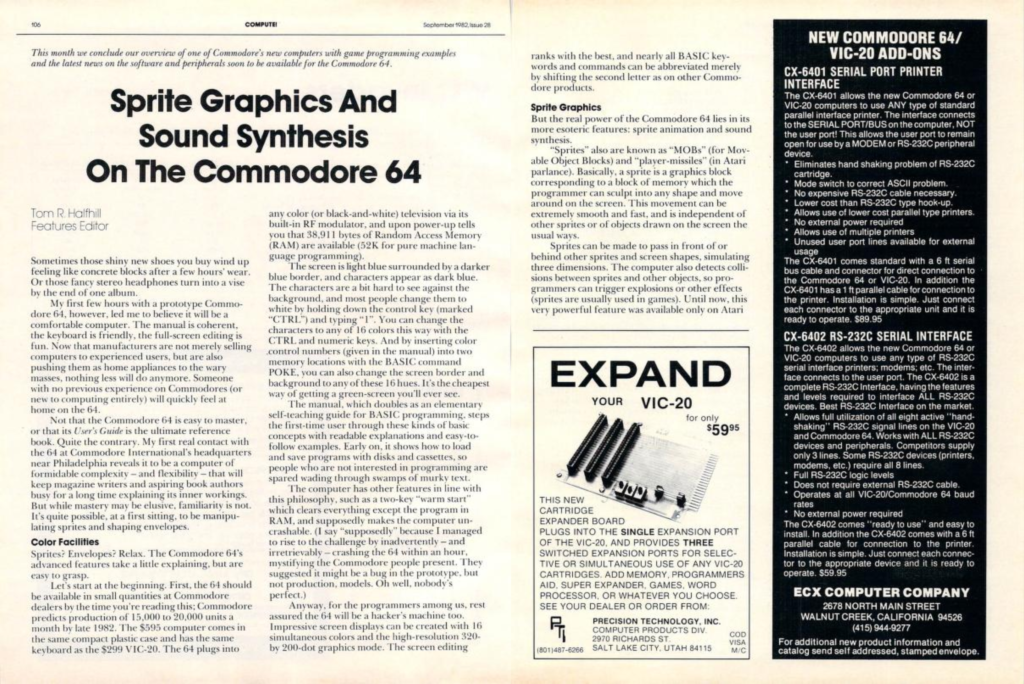
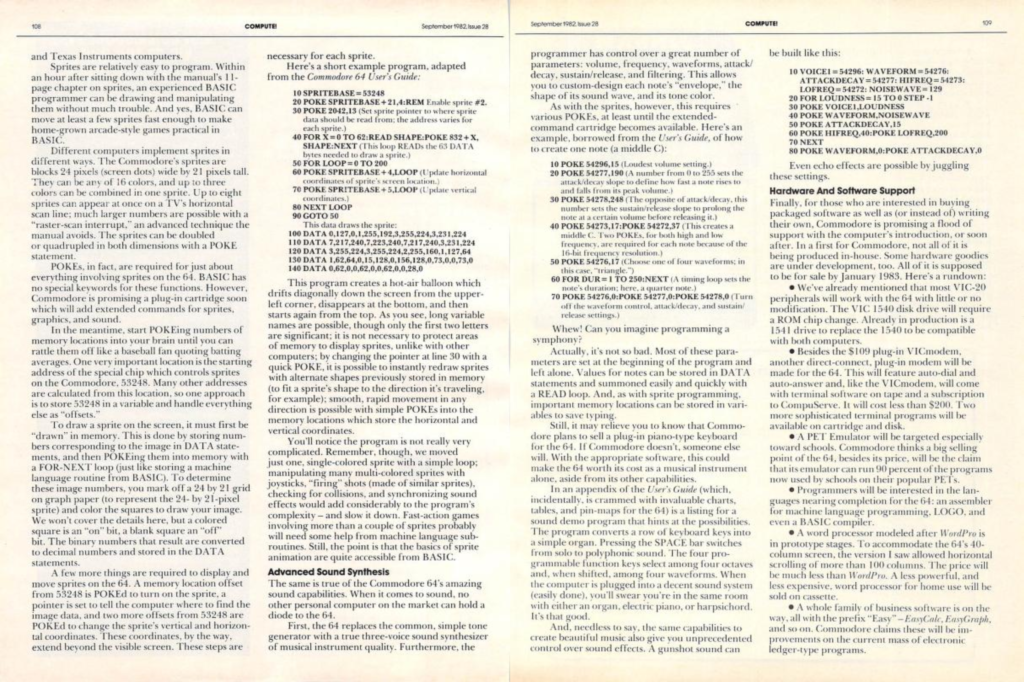
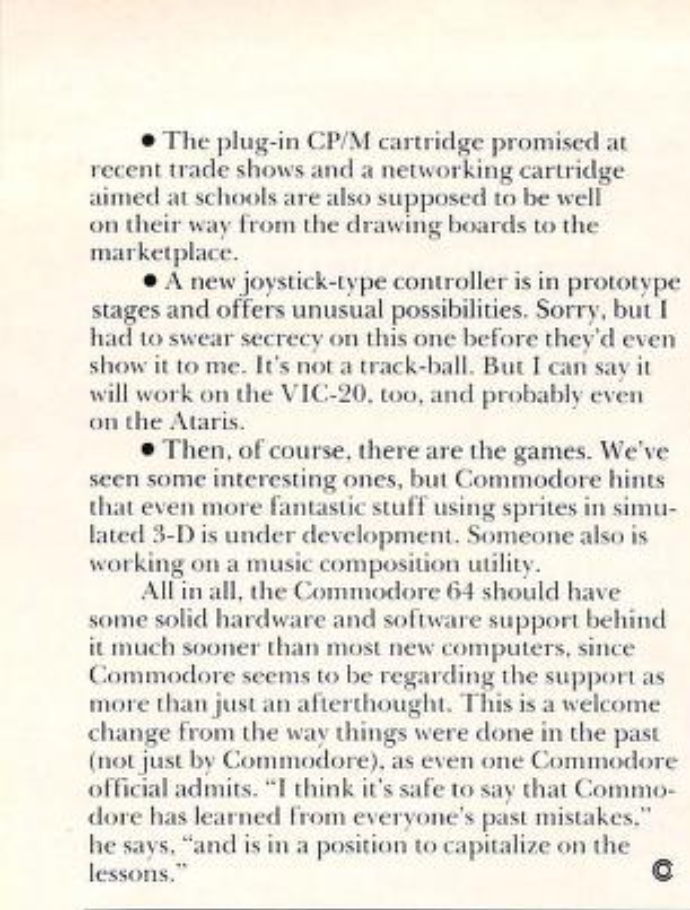
An extra, from that issue, is an ad for one of Microsoft’s first peripherals, a memory card for the Apple II:
